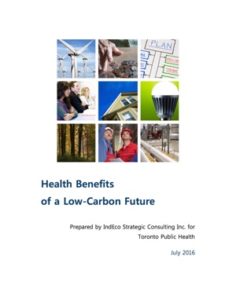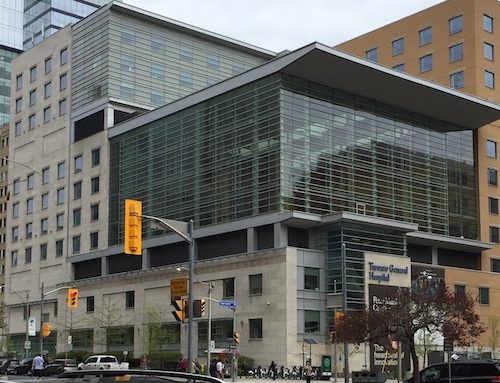 In 2007, Toronto adopted the target of reducing greenhouse gas emissions across Toronto by 80% by the year 2050, relative to 1990 levels. This report provides input to TransformTO, a project lead by the City of Toronto Environment and Energy Division and the Toronto Atmospheric Fund to identify a path that will lead Toronto to a low-carbon future, while maximizing health, equity and prosperity. The report considers health benefits (and costs) associated with mitigation measures in each of five urban sectors, based on a review of the literature.
In 2007, Toronto adopted the target of reducing greenhouse gas emissions across Toronto by 80% by the year 2050, relative to 1990 levels. This report provides input to TransformTO, a project lead by the City of Toronto Environment and Energy Division and the Toronto Atmospheric Fund to identify a path that will lead Toronto to a low-carbon future, while maximizing health, equity and prosperity. The report considers health benefits (and costs) associated with mitigation measures in each of five urban sectors, based on a review of the literature.
Transportation
Toronto’s inventory shows that about 40% of Toronto’s GHG emissions come from the transportation sector. An even higher percentage of other air pollutants are attributed to the transportation. Within the sector, there are multiple kinds of opportunities related to reducing GHG emissions, including: reducing demand, improving fuel efficiency, switching fuels, and changing modes of transport.
A major focus of urban transportation analyses for GHG reduction and health promotion has been active transportation. There is a rich literature on the benefits (and risks) of active transportation. Benefits are primarily related to health benefits of higher levels of physical activity for the user, and lower vehicle emissions for the broader population. Risks may be increased exposure of users to contaminants or the risk of accidents, though those may be mitigated through design, and the risk of collisions decreases as more people participate in active transportation. A number of analysts have examined the cumulative, net impact on health of increased active transportation and have concluded that the net benefits outweigh the risks by a significant margin. Health benefits from increased physical activity include: reduction in obesity and type 2 diabetes, reduced depression, and reduced breast and colon cancers.
Other opportunities for improving health and reducing GHGs from transportation relate to fuel switching (e.g. to electric vehicles) and removing older vehicles which are the most polluting. Benefits of lower levels of air pollution include: reduced ischemic heart disease and reduced acute respiratory diseases.
Buildings
Buildings are the next largest source of emissions reported in Toronto’s GHG inventory, and represent a particular challenge because they mostly use low-carbon fuels already (electricity and natural gas), and have a long life-time. However, there are significant opportunities for improving the efficiency of buildings, while concurrently improving ventilation and indoor air quality. This is particularly true in older buildings where residents have moderate incomes, which tend to have poor ventilation or indoor air quality. Some of the benefits observed from retrofitting buildings of this type include: reduced sinusitis, hypertension, obesity and asthma attacks, as well as increases in overall health scores that take into account cardiac, respiratory and mental health.
Other sectors
The report also considers other sectors, including some not captured, or only partially captured, in Toronto’s inventory, including food systems and waste management systems. Significant greenhouse gas emission reductions and health benefits may be realized with changes in diet (though the emission reductions will primarily be outside the city). Although the inventory captures landfill emissions (outside the city boundaries), health benefits have been attributed to various waste reduction measures that would also reduce greenhouse gas emissions (outside the city).
The report provides an extensive bibliography and an appendix that surveys methods for quantifying health benefits and impacts.
About the author
David Heeney, CEO of IndEco, was the principal author of the report.
Source document
http://www1.toronto.ca/City%20Of%20Toronto/Toronto%20Public%20Health/Healthy%20Public%20Policy/Climate%20Change/Files/Low-C%20Report%20TPH%202016-06-23%206%204%20AODA.pdf
Related information
An IndEco report: Road to health: Improving walking and cycling in Toronto.
The Toronto Board of Health adopts the report
Article about the report by Toronto Atmospheric Fund Carbon reduction = good health






